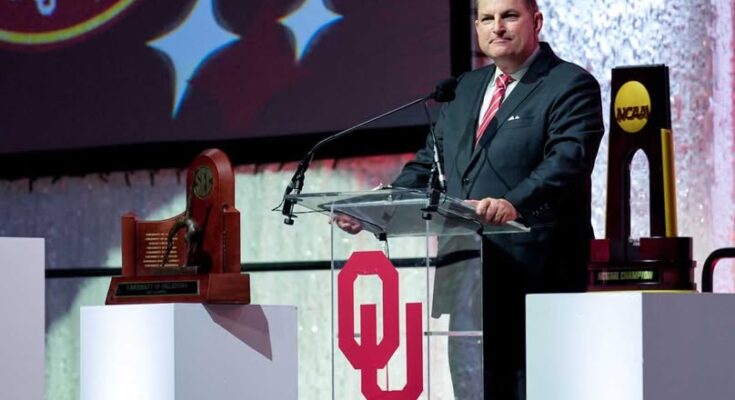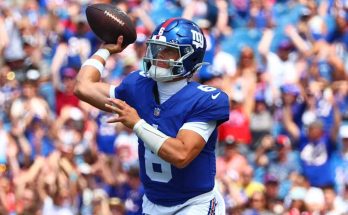The tectonic plates of collegiate athletics have shifted irrevocably with the approval of the House v. NCAA settlement, ushering in an unprecedented era of direct revenue sharing with student-athletes. In response to this monumental change, Joe Castiglione, the long-tenured and highly respected Athletic Director for the University of Oklahoma, has swiftly outlined the Sooners’ comprehensive plans for navigating this new financial landscape. His detailed strategy, shared in public statements and through university communications, reflects a proactive approach designed to ensure Oklahoma remains at the forefront of national competition while providing substantial financial certainty for its student-athletes.
Castiglione has been unequivocal: Oklahoma will share the maximum allowable revenue with its athletes under the terms of the House settlement. This commitment translates to distributing the full $20.5 million for the 2025-26 academic year, a figure that is set to increase by at least 4% annually over the next decade. This immediate embrace of the maximum permissible payout underscores Oklahoma’s determination to remain highly competitive, particularly as they transition into the Southeastern Conference (SEC), a league renowned for its financial might and fierce athletic rivalries.
The complexity of the new revenue-sharing model lies not just in the total amount but in its allocation across the myriad of sports offered by a university. Castiglione has clarified Oklahoma’s approach, revealing that the $20.5 million will be primarily distributed across six key sports: football, men’s basketball, women’s basketball, baseball, softball, and women’s gymnastics. This selection is highly strategic, focusing on programs that are either significant revenue generators or have a history of national prominence and exposure, thereby offering the greatest return on investment in terms of competitiveness and brand visibility.
Of the total $20.5 million, Castiglione explained that up to $2.5 million must be set aside for new scholarships, which count against the overall cap. Oklahoma has proactively added 91 new scholarships across its various athletic teams, demonstrating a commitment to creating broader financial stability for its student-athletes, even those in non-revenue-sharing sports. This means that after the scholarship allocation, approximately $18 million remains for direct distribution to athletes in the six designated sports.
While the precise percentage breakdown for each of the six sports is still being finalized, Castiglione has indicated that Oklahoma’s model will largely align with a framework gaining traction among other prominent SEC schools. This often-discussed model allocates approximately 75% of the direct revenue share to football, 15% to men’s basketball, 5% to women’s basketball, and the remaining 5% to other designated sports. For Oklahoma, this would likely mean that football, as the primary revenue driver (generating over $130 million in revenue in the 2024 fiscal year), will receive the lion’s share, roughly $13.5 million to $14 million. The remaining funds would then be proportionally distributed to men’s and women’s basketball, baseball, softball, and women’s gymnastics.
Castiglione’s decision to include baseball, softball, and women’s gymnastics in the direct revenue-sharing pool, beyond the typical football and basketball allocations, highlights Oklahoma’s unique athletic successes. The Sooners’ softball program, in particular, is a national dynasty with multiple recent championships, and women’s gymnastics is also a perennial national contender. Baseball has also enjoyed significant success. By including these programs, Oklahoma acknowledges their contribution to the university’s athletic prestige and provides direct financial benefits to athletes in sports that, while not generating revenue on the scale of football, are immensely successful and popular within the state and nationally.
A critical component of Oklahoma’s readiness for this new era is the comprehensive restructuring of its athletic department. Castiglione has been working with executive advisors, including former AT&T CEO Randall Stephenson, to develop a “new blueprint” for college sports. This includes a more streamlined staff structure and strategic reinvestment in priority areas. Notably, the Sooners have invested significantly in building a “GM shop” for their football program, hiring Jim Nagy as general manager, a move that parallels professional sports organizations and underscores their commitment to optimizing roster management and talent acquisition in the NIL era.
This proactive approach has involved difficult decisions, including a limited workforce reduction (approximately 5% of full-time, non-student employees) within the athletic department to free up funds for revenue sharing and other priority investments. Castiglione himself has accepted a reduction in his own compensation, signaling a shared sacrifice across the department to meet the demands of this new financial reality.
The funding for this $20.5 million commitment will come from a diversified portfolio of revenue streams, including donor contributions, ticket sales, media rights, sponsorships, and conference distributions. Oklahoma’s upcoming move to the SEC is a significant financial boon, as they will receive a full share of the league’s revenue distribution starting in the current fiscal year, which is expected to bring in an additional $32 million to the athletic department. This increased revenue stream is crucial for enabling the Sooners to meet their revenue-sharing obligations while maintaining a self-sufficient athletic department, without relying on state or student funding.
Beyond the direct revenue sharing, Castiglione has emphasized that Oklahoma remains committed to supporting all 21 of its varsity sports. For those sports not included in the direct revenue-sharing pool, the athletic department will seek to “create financial certainty” by increasing scholarship opportunities. The House settlement also allows for increased scholarship limits across teams and places caps on roster sizes, which Oklahoma plans to leverage to maximize support for all its student-athletes. This approach aims to address Title IX compliance while strategically allocating direct payments to the primary revenue drivers and most successful programs.
Castiglione views the House settlement not as a challenge to be overcome, but as an “unprecedented opportunity” for Oklahoma Athletics to excel. He has consistently communicated that the university has been preparing for this day for a long time, enabling them to be “well prepared” to navigate the “ever-evolving landscape.” This confidence stems from their foresight in restructuring the department, investing in key personnel and infrastructure, and securing new revenue streams to support the direct payment model.
In essence, Oklahoma’s plan under Joe Castiglione is a sophisticated response to the new era of collegiate athletics. By committing the maximum allowable revenue share, strategically allocating funds across key programs, and proactively restructuring its operations, Oklahoma aims to solidify its position as a national powerhouse. The focus is on creating financial certainty and elite development for its student-athletes, ensuring the Sooners remain a top destination for talent and a consistent competitor for championships across multiple sports, all while embracing the transformative changes brought about by the House settlement.


